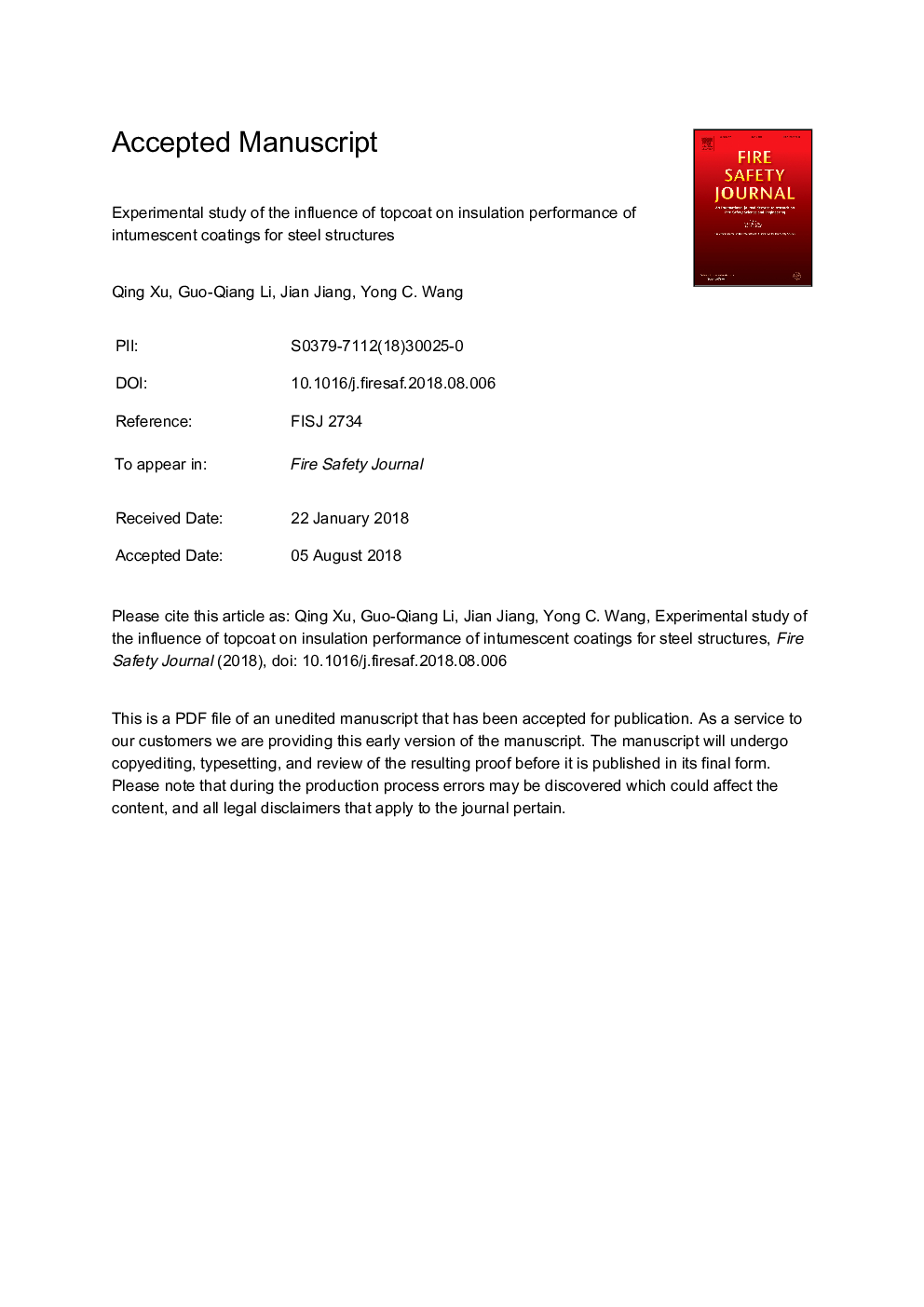| Article ID | Journal | Published Year | Pages | File Type |
|---|---|---|---|---|
| 8947093 | Fire Safety Journal | 2018 | 28 Pages |
Abstract
This paper presents the results of an experimental study to investigate the influence of topcoat on the fire protection performance of intumescent coatings by comparing temperatures in steel elements protected by intumescent coatings and effective thermal conductivities of intumescent coatings with and without topcoat. A total of 112 steel elements of plate, I-section and C-section were tested to investigate the effects of changing intumescent coating type and thickness, number of layers of topcoat, steel section factor and furnace fire scenario. The fire performance of intumescent coatings is represented by an effective constant thermal conductivity. The results show that under the ISO 834 standard fire condition, topcoat has significant negative effects (reduced expansion and increased thermal conductivity) on solvent based intumescent coatings. The effective constant thermal conductivities of intumescent coatings with topcoat were on average about 20% higher than those without topcoat. However, the effects are similar for different numbers of layers of topcoat. Topcoat has little effect on the performance of waterborne intumescent coatings. The effect of topcoat increases for thinner intumescent coatings. Topcoat affects the performance of waterborne intumescent coatings under large space fire conditions with a lower maximum temperature and a slower heating rate than the ISO 834 standard fire condition, but more comprehensive research is required to draw specific conclusions.
Keywords
Related Topics
Physical Sciences and Engineering
Engineering
Civil and Structural Engineering
Authors
Qing Xu, Guo-Qiang Li, Jian Jiang, Yong C. Wang,
